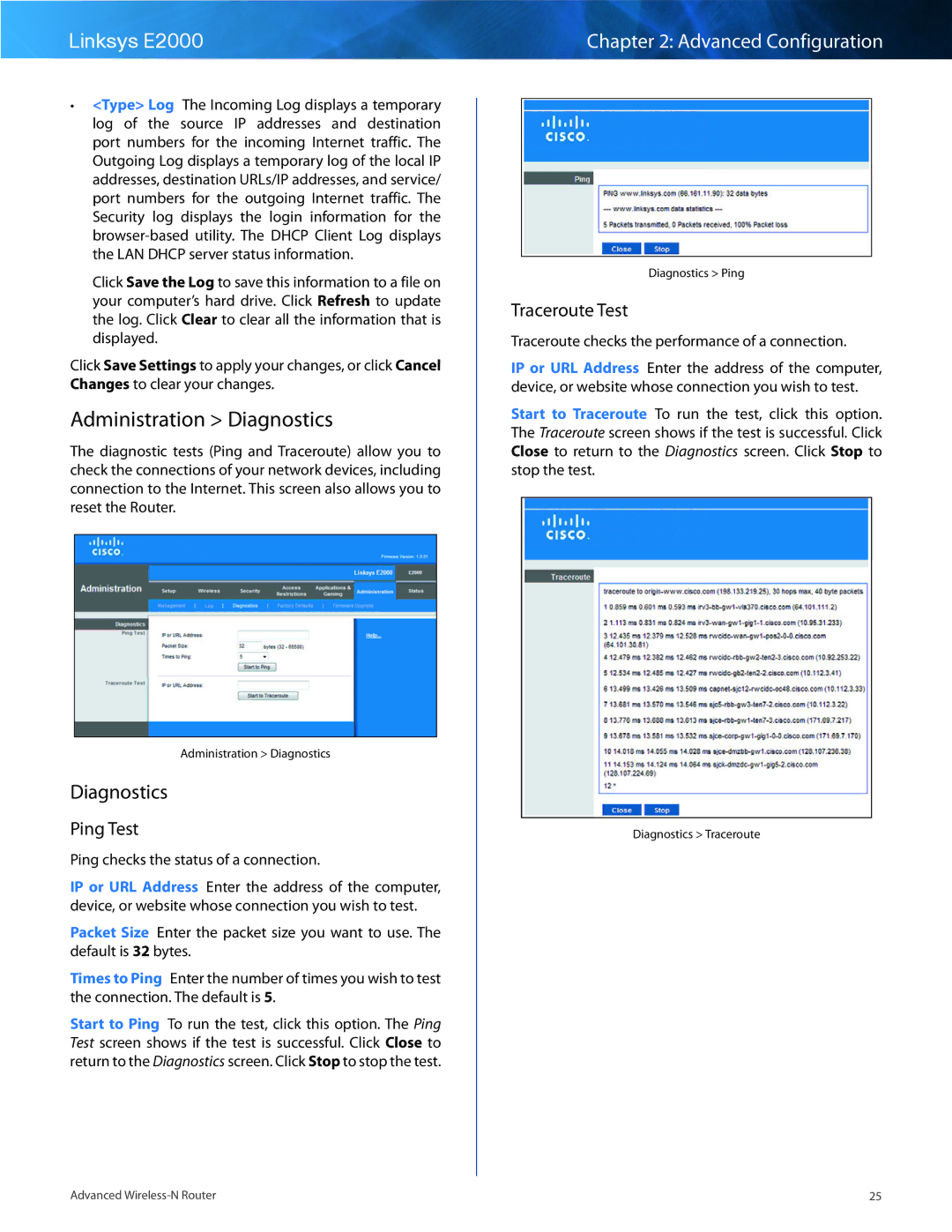E2000 specifications
Cisco Systems E2000 is a powerful router designed to meet the demands of today's diverse networking environments. Positioned mainly for medium to large enterprises, the E2000 boasts features and technologies that enhance performance, scalability, and security, making it a cornerstone for modern network architecture.One of the standout features of the E2000 is its ability to support dual-stack IPv6 and IPv4, allowing organizations to transition seamlessly to the next generation of internet protocol. This forward-thinking characteristic ensures that businesses are future-proofed and can continue to expand their operations without worrying about compatibility issues.
The E2000 is equipped with multiple Gigabit Ethernet ports, facilitating high-speed data transfer and efficient bandwidth utilization. This router supports advanced routing protocols, which include OSPF, EIGRP, and BGP, providing enhanced connectivity options tailored to the specific needs of the organization. In addition, it integrates with Cisco’s Smart Software Licensing, simplifying the management of licenses and ensuring compliance with minimal effort.
Security is paramount in today’s digital landscape, and the E2000 addresses this need with robust built-in security features, including firewall capabilities, intrusion prevention systems, and threat defense mechanisms. These attributes protect the organization from external threats while ensuring that sensitive data remains confidential.
Ease of management is another hallmark of the Cisco E2000. With Cisco DNA Center integration, administrators can enjoy simplified network management through automation and better visibility. The router supports software-defined networking (SDN) architectures, allowing for more agile configurations and changes in response to evolving business needs.
Furthermore, the E2000 is designed to ensure high availability and reliability, incorporating redundancy features such as dual power supplies and failover mechanisms. This commitment to uptime makes it an ideal solution for mission-critical applications.
Lastly, the Cisco E2000 is highly scalable, making it suitable for businesses of all sizes. Whether a company is expanding its physical locations or requiring enhanced bandwidth for mobile applications, the E2000 can meet these demands without compromising on performance or security.
In summary, Cisco Systems E2000 is a feature-rich router that combines cutting-edge technologies with robust security and management capabilities, making it a reliable choice for enterprises seeking to enhance their network infrastructure.

